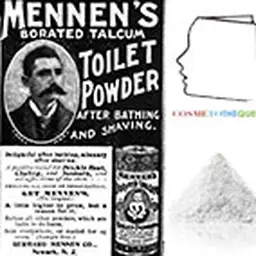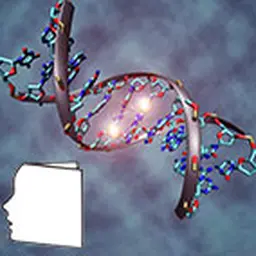
Ingredients play an important role in our industry's history and ways of innovating. Hence the idea of telling how some of them were carried on the baptismal font. It is not a question of promoting these substances, but of giving a more precise idea of how they were developed. This time, it is an asset that is the first of its kind and is based on a new concept, the microbiome. Awarded at the In Cosmetics 2015 exhibition, it will certainly rank among the remarkable ingredients. Make way for history. Thanks to Induchem and Fabrice Lefèvre. Jean-Claude Le Joliff.
Skin and bacteria
It has long been known that skin has a significant number of microorganisms on its surface. They are at the origin of certain manifestations such as body odours. The systematic and organized research of the cutaneous flora is experiencing a new boom in the study of the microbiome. It is a major international program, HMP for Human Microbiome Project started in 2007, and which aims to identify and characterize all micro-organisms colonizing an animal, with a very clear extension towards humans. It is estimated that bacteria in the human body are about ten times more numerous than its own cells. All their populations form an ecosystem of which little is known and which is now the subject of studies. This ecosystem is called the microbiota. Microbiome refers to the experimental approach that uses genomic methods, because rather than sequencing the genomes of all bacterial species, we use metagenomic methods, applicable to a complete ecosystem. Initial work has shown that this system plays a role in the very important role in the regulation of several functions in humans . What about the skin in all this? Not much is known at the moment, except that the cutaneous flora is much richer and more diversified than we thought.
In the cosmetics industry, it is almost taboo to talk about microbes. If some companies have worked on probiotics, even prebiotics, to stimulate specific microbes on our skin, the study and role of the skin microbiome is experiencing a new boom as part of the human microbiome program. In fact, we often only consider pathogenic micro-organisms involved in skin disorders (acne, dandruff, spots…). The reality of our skin's microflora is much more sophisticated. On its surface, in intimate connection with the stratum corneum, we have an innate active stratum of microorganisms that can be called the"stratum microbium". This"microbium stratum" formed during evolution. Microbes appeared on Earth 3.8 billion years ago. The genus Homo, including humans and their predecessors, appeared 2.5 million years ago. So we basically co-evolved with the microbes. This is perhaps the reason why we have ten times more microorganism cells than human cells on our body, and the human genome has 37% of genes inherited from microorganisms. The symbiosis between micro-organisms and man has taken place during evolution, at two interfaces: internal and man/external environment relations. The inside is our intestine, and consumers are now well educated on the fact that they must take care of their intestinal microflora to avoid any health problems. We have 10 to 100 million microorganisms per cm2 on our skin.
Metagenomics
To be able to study these micro-organisms, it is necessary to know how to isolate and cultivate them. Scientists can only cultivate 1 to 3% of them. Their analysis is therefore limited. Under laboratory conditions, the remaining 97-99% are impossible to analyze because we cannot grow them. We therefore have practically no way of understanding the composition of the"stratum microbium" that is on our skin, and even worse, its activity: which micro-organism to do what with traditional technologies? Metagenomics was developed in part to answer this question. It is a methodological process that aims to study the genetic content of a sample from a complex environment (intestine, ocean, soil, air, etc.) found in nature (as opposed to samples grown in a laboratory). The aim of this approach, via direct sequencing of the DNA present in the sample, is to have not only a genomic description of its content, but also an overview of the functional potential of an environment. The concept of metagenomics is simple: if microorganisms cannot be grown for analysis, their genomic DNA can be perfectly collected and analysed. Thanks to these techniques, it was possible to sequence the genomes of the microorganisms in the"stratum microbium". This is equivalent to sequencing 13 times the human genome, or, if we convert the 40 billion base DNA into books of content, it represents 160,000 books of 250 pages each (or twice the total content of Wikipedia U.S. which includes 18 million articles).
Induchem's contribution
Induchem acquired five years ago an R&D company called Libragen, specialized in biotechnology. This society has been, and still is, centred around two areas of research: - biocatalysis, which consists in the synthesis of molecules with enzymes (this process is also the basis of several active ingredients of Induchem, Inoveols®), - metagenomics.
This latter activity had never been promoted before. Libragen researchers originally conducted fundamental studies on soil or other environmental issues. Then they participated in studies on the microbiota of the human intestine, healthy people or patients with Crohn's disease or colon cancer, the goal being to try to understand more deeply the relationship between health status and intestinal microflora. They therefore have the skills to apply this technique to the study of skin microbiome. With this in mind, and drawing on the 15 years of metagenomic expertise of Libragen's experts, they were asked to apply these techniques to the study of the microbiota of the skin. To this end, they have developed a sampling technique that allows samples of the"stratum microbium" to be taken from human volunteers who are not too"polluted" by human genomic DNA. From this enormous amount of information, they showed that'stratum microbium' has a very specific enzyme activity, with enzymes cleaving alpha-glucosides called alpha-glucosidases. This is the first time that such a technology (metagenomics) has been used to explore the"stratum microbium" and to discover this specific enzyme activity.
Meanwhile, some of Induchem's skin biology researchers were exploring the possibility of developing a new whitening ingredient. They had identified THBA (trihydroxybenzoic acid or gallic acid) as a potent natural tyrosinase inhibitor, the enzyme involved in melanin formation. Unfortunately, THBA is very unstable and cannot be developed for cosmetic applications.
They then had the idea to use biocatalysis techniques to graft an alpha-glucoside onto THBA, generating THBG or trihydroxybenzoic acid glucoside. This approach led to the development of the active Brightenyl® molecule. The advantage of THBG is on several levels: the addition of an alpha-glucose increases the solubility in water and the stability of THBA. They thus had in hand a"pro-drug" version of THBA, or more exactly a stable precursor of the active molecule. Since THBG has alpha-glucose, it can be converted to THBA during its penetration into the"stratum microbium" by the alpha-glucosidase activity of this layer.
In addition, the chemical synthesis of THBG was very expensive and very contaminating (solvents, bromine…). By using Libragen's biocatalysis skills to produce THBG using biocatalysis, the 12 rules of green chemistry can be respected.
Using Brightenyl®
The Brightenyl® ingredient has the advantage of being multifunctional. By its very nature, it is a powerful antioxidant that releases its free radical capturing activity when activated by the"stratum microbium". By way of comparison, it provides four times as much protection as vitamin C. It therefore plays a protective role, especially as it also actively protects the cells' DNA against UV radiation. This ingredient targets a total of seven biological pathways related not only to pigmentation (melanin synthesis), but also to skin colour (redness). The skin is 16 times lighter, has 150% less melanin, 18 times fewer"UV spots" (spots that can be detected under special light and indicate sun damage) and 600% less redness. Its use is recommended in all face and hand products that aim to unify the color and complexion of the skin.
|
This contribution was made by Fabrice Lefèvre.
Fabrice is International Director of Scientific Marketing at Induchem. He is a biotech engineer and a PhD in molecular biology and protein engineering. Before taking over the scientific leadership of Libragen, he was responsible for the technology development and scientific leadership of Protéus, a biotechnology company specializing in the discovery of industrial enzymes. He is currently in charge of international scientific marketing at Induchem, coordinating product development, sales and marketing within the group.
Induchem is a Swiss company design and marketing of cosmetic ingredients. |












